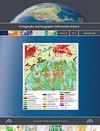Choose your own route – supporting pedestrian navigation without restricting the user to a predefined route
IF 2.4
3区 地球科学
Q1 GEOGRAPHY
Cartography and Geographic Information Science
Pub Date : 2021-10-28
DOI:10.1080/15230406.2021.1983731
引用次数: 7
Abstract
ABSTRACT State-of-the-art mobile pedestrian navigation systems often employ GPS or other positioning methods for continuous tracking of users, and thus provide them with in-situ turn-by-turn route guidance along a desired route. However, studies have shown that user experience and acquisition of spatial knowledge decrease due to the “blind” following of such turn-by-turn navigation systems. This paper proposes a novel interface concept for mobile pedestrian navigation systems that provide navigation guidance without restricting the users to a predefined route. Specifically, the proposed novel user interface was based on the concept of the Potential Route Area (PRA), which defines a dynamic area consisting of all potential routes not longer than a certain detour the user is willing to accept. Within that area, the user can freely choose his/her own route and alter it anytime, and can still arrive at the destination within the desired detour tolerance. As a proof of concept, the proposed PRA-based system was then tested against a conventional turn-by-turn navigation system, represented by Google Maps, in a real-world navigation experiment, which revealed that the acquisition of spatial knowledge and user experience were substantially improved when using the PRA-based system. This can be explained by the fact that the PRA-based system provides its users with more freedom in choosing their own route.选择您自己的路线-支持行人导航,而不限制用户到预定义的路线
目前最先进的移动行人导航系统通常采用GPS或其他定位方法对用户进行持续跟踪,从而为用户提供沿期望路线的实时转弯路径引导。然而,研究表明,由于这种逐向导航系统的“盲目”跟随,用户体验和空间知识的获取会下降。本文提出了一种新的移动行人导航系统界面概念,该系统在不限制用户使用预定路线的情况下提供导航引导。具体来说,提出的新用户界面基于潜在路由区域(PRA)的概念,该概念定义了一个动态区域,由不超过用户愿意接受的某个绕路的所有潜在路由组成。在该区域内,用户可以自由选择自己的路线并随时改变,并且仍然可以在期望的绕行容限内到达目的地。作为概念验证,在现实世界的导航实验中,将基于pra的系统与谷歌Maps为代表的传统逐向导航系统进行了测试,结果表明,使用基于pra的系统时,空间知识的获取和用户体验都得到了显着改善。这可以解释为基于pra的系统为用户提供了更大的自由选择自己的路线。
本文章由计算机程序翻译,如有差异,请以英文原文为准。
求助全文
约1分钟内获得全文
求助全文
来源期刊
CiteScore
5.20
自引率
20.00%
发文量
23
期刊介绍:
Cartography and Geographic Information Science (CaGIS) is the official publication of the Cartography and Geographic Information Society (CaGIS), a member organization of the American Congress on Surveying and Mapping (ACSM). The Cartography and Geographic Information Society supports research, education, and practices that improve the understanding, creation, analysis, and use of maps and geographic information. The society serves as a forum for the exchange of original concepts, techniques, approaches, and experiences by those who design, implement, and use geospatial technologies through the publication of authoritative articles and international papers.

 求助内容:
求助内容: 应助结果提醒方式:
应助结果提醒方式:


